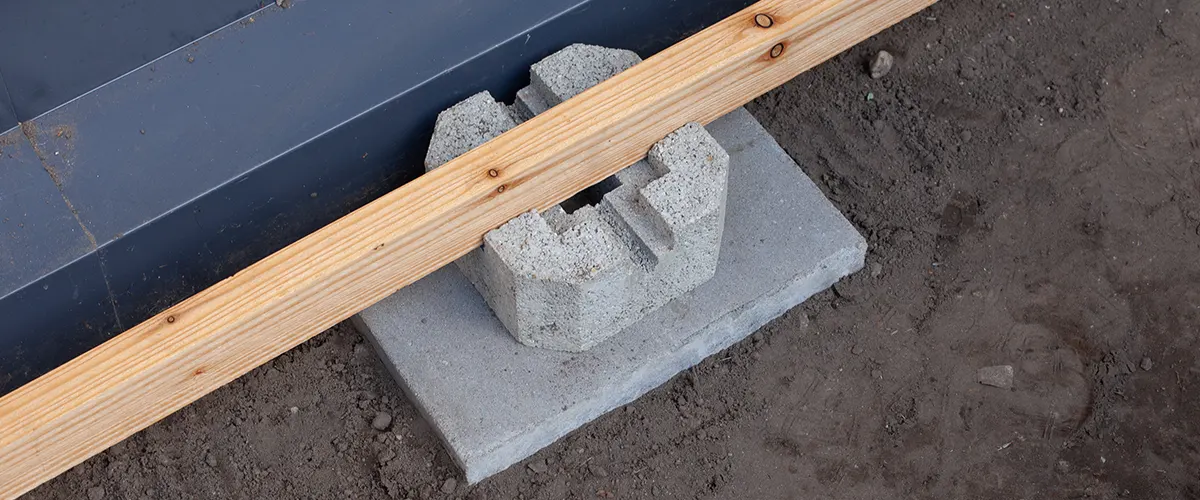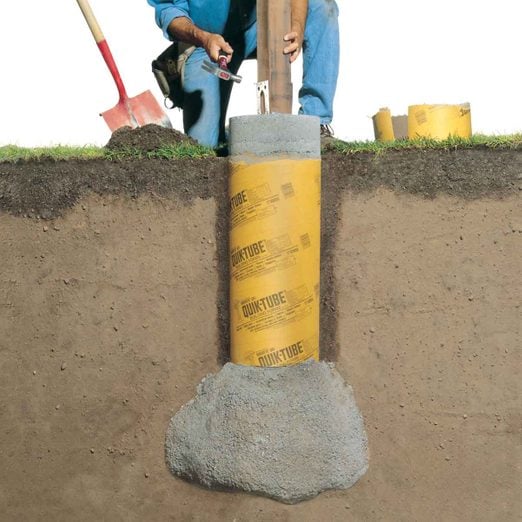Develop a Strong Structure for Your Deck With Deck Footing: Optimize Stability and Reduce Architectural Problems
When it comes to constructing a deck, one of the most vital components often neglected is the deck ground. In this conversation, we will explore the relevance of deck ground, the process of selecting the ideal material, preparing the ground, and the correct installment techniques. By the end, you will certainly have an extensive understanding of exactly how to develop a well-founded foundation for your deck, guaranteeing its durability and safety and security for years to come.
Value of Deck Ground
The value of deck ground can not be overstated as it serves as the foundation upon which the whole deck framework counts for stability and structural integrity. Deck footings are the base support group that transfers the load of the deck to the ground, guaranteeing that the weight is evenly dispersed and shifting or preventing any kind of sinking of the structure. Without a solid and properly constructed footing, a deck is vulnerable to a variety of architectural issues, such as sagging, leaning, and also collapse.
Deck footings play an essential duty in taking full advantage of the security of the deck. This stability not just makes certain the safety of the deck customers yet likewise minimizes the danger of damages to the deck itself.
Additionally, deck grounds are essential for keeping the architectural stability of the deck. By supplying a strong base, footings assist to disperse the weight of the deck and any applied lots to the underlying soil or concrete. This stops excessive stress on the deck products, such as the light beams and blog posts, and makes certain that the deck stays tough and sturdy in time.
Selecting the Right Ground Material
To ensure optimum stability and structural stability, choosing the suitable ground product is a vital choice when it pertains to constructing a deck. The choice of footing material depends upon numerous elements such as the dirt problems, environment, and the overall layout of the deck. There are a number of choices available, each with its own benefits and downsides.
One usual footing material is concrete. Concrete footings are long lasting and offer excellent security.

Sonotubes, additionally referred to as cardboard tubes, are an additional alternative. They are simple to set up and cost-efficient. Sonotubes appropriate for decks with light to moderate loads and in locations with secure dirt problems. They might not be as durable as helical or concrete piers.
Ultimately, the choice of footing product depends on various elements, consisting of spending plan, dirt problems, and the certain requirements of the deck. Consulting with an expert home builder or structural designer can help make certain that the ideal footing product is picked for your deck, taking full advantage of security and decreasing architectural issues.
Preparing the Ground for Footing Setup
Properly preparing the ground is an important action in the setup of deck footings, guaranteeing a steady foundation for your deck. Before starting the installation procedure, it is critical to completely evaluate the ground and make required modifications to ensure that the footing will certainly be safe and secure and secure.
This will certainly give a clean and level surface area for the footings. If the soil is unstable or loosened, it may be needed to compact it or include a layer of crushed rock to improve stability.
Sometimes, it may be a good idea to dig a hole for every footing to guarantee proper depth and security. The deepness will certainly vary depending on the dimension and weight of the deck, in addition to the soil conditions. It visite site is important to seek advice from local building ordinance and guidelines to identify the ideal deepness for your certain circumstance.
Once the ground has actually been cleared and prepared, it is prepared for the installment of the deck footings. By putting in the time to appropriately prepare the ground, you can make best use of stability and minimize prospective architectural problems, ensuring a solid structure for your deck.
Correct Installation Techniques for Deck Footing
Utilizing appropriate installment techniques is vital for guaranteeing the stability and architectural stability of deck grounds (Deck Footings). When setting up deck grounds, it is important to follow specific standards to make best use of the long life and safety of your deck
To start with, it is crucial to figure out the ideal dimension and depth of the footings based on the local building ordinance and soil problems. This information will help establish the spacing and number of grounds required to sustain the weight of the deck.

When positioning the footings, it is essential to utilize a secure and durable material, such as concrete. The footings must be poured right into the openings, making sure they are level and lined up correctly with the deck's layout. It is important to permit the concrete to cure properly before waging the deck construction.
Last but not least, it is view publisher site vital to make sure that the grounds are sufficiently sustained and secured from wetness. Deck Footings. This can be attained by utilizing metal braces or posts to boost the deck in the air and applying waterproofing products to stop water damages
Examining and keeping Deck Footing On A Regular Basis
Normal maintenance and evaluations of deck grounds are essential for guaranteeing their continuous stability and architectural stability. By conducting routine examinations, homeowners can recognize any potential concerns or damages beforehand, preventing much more serious problems in the future. Inspections should be brought out a minimum of yearly, or after considerable climate events such as heavy rains or snowstorms.
During evaluations, it is necessary to look for any type of indicators of damages or wear and tear, such as cracks, sinking, or changing of the grounds. Any type of signs of rot or decay must likewise be resolved immediately, as these can weaken the foundation of the deck. Additionally, inspecting the connections between the grounds and the deck articles or light beams is crucial, as loosened or broken connections can jeopardize the general stability of the framework.
Along with routine assessments, routine maintenance is also necessary to extend the life-span of deck footings. This consists of keeping the grounds totally free and tidy from particles, in addition to making certain correct drainage to avoid water accumulation. Regularly inspecting and maintaining the bordering landscape can also help stop concerns such as erosion or the development of vegetation that can influence the footings.
Conclusion
To conclude, deck ground plays an essential role in giving stability and decreasing structural concerns for your deck. By choosing the appropriate ground material, preparing the ground effectively, and adhering to correct installment strategies, you can create a solid foundation for your deck. Routine maintenance and examination of the deck ground will certainly ensure its lasting longevity and safety and security.
The click to read importance of deck footing can not be overstated as it serves as the foundation upon which the whole deck framework relies for stability and architectural integrity. Deck grounds are the base support system that transfers the lots of the deck to the ground, guaranteeing that the weight is uniformly distributed and moving or protecting against any type of sinking of the framework.Deck footings play a vital function in maximizing the stability of the deck.Additionally, deck grounds are crucial for maintaining the structural integrity of the deck.In conclusion, deck footing plays a critical function in providing stability and minimizing structural problems for your deck.